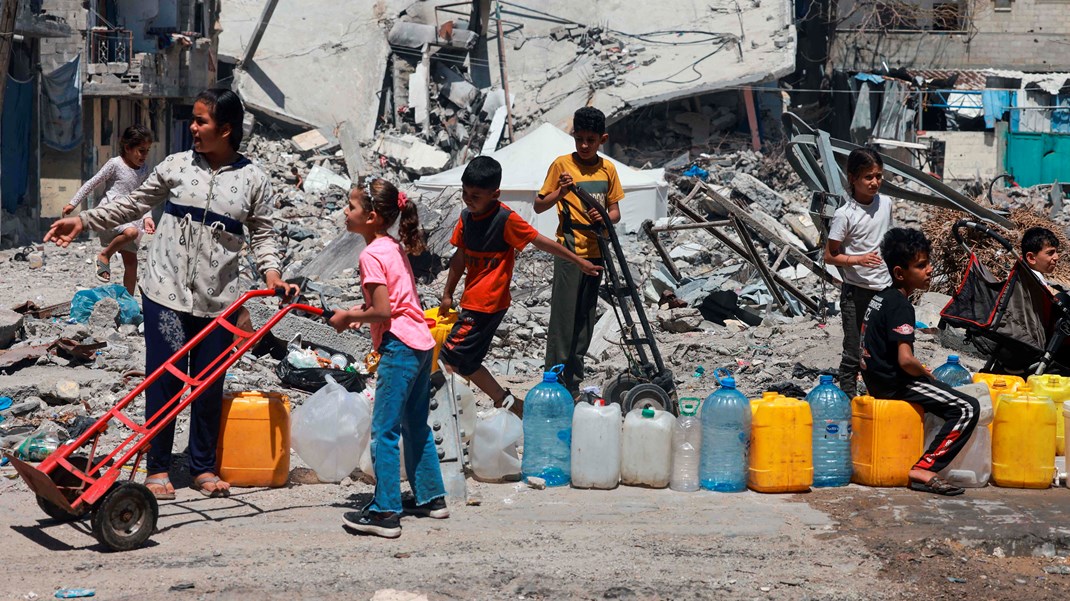Fall armyworm infestation wreaking havoc on belg crops across Ethiopia
Key Issues
• A fall armyworm infestation is currently wreaking havoc on belg crops across six regions in Ethiopia and is spreading at an alarming rate.
• The Ministry of Agriculture and Natural Resources has called on additional stakeholders’ participation to protect major maize growing areas from complete damage.
• Led by the National Disaster Risk Management Commission, the National Flood Task Force is finalizing a flood alert and flood contingency plan for preparedness and response.
• Ethiopia to host World Refugee Day in Gambella town
Following poor performing spring rains, the number of people receiving humanitarian assistance has increased from 5.6 million to 7.8 million in the first quarter of the year, and is expected to heighten further in the second half of the year. Increased funding is needed urgently, in particular to address immediate requirements for food and nutrition, as well as clean drinking water, much of which is being delivered long distances by truck as regular wells have dried up.
Ministry calls for a coordinated response to contain the rapidly spreading fall armyworm
A fall armyworm infestation is currently wreaking havoc on belg/spring crops across six regions in Ethiopia and is spreading at an alarming rate. The armyworm was first reported in Yeki woreda of Sheka zone, SNNP region in the third week of February – Sheka zone is one of the surplus producing areas in the region along with Bench Maji and Keffa zones. The infestation has since spread to Amhara, Benishangul Gumuz, Gambella, Oromia and Tigray regions. At present, more than 145,000 hectares of maize crop across 233 woredas in 35 zones is reportedly affected nationwide. In SNNP region alone, all zones are impacted to varying degrees and at least 5,653 hectares of belg cropland is infested, affecting some 20,000 households. Poor belg rains coupled with armyworm damages will likely significantly reduce projected belg harvest this year.
The Government of Ethiopia, with support from FAO and other partners, is taking several measures to curb the spread of the infestations. At least 35 per cent of infested areas have been sprayed with pesticides, while handpicking and killing the armyworms accounts for an additional 26 per cent, leaving the remaining cropland with no control measures. The Ministry of Agriculture and Natural Resources has called on additional stakeholders’ participation to protect major maize growing areas from complete damage. The Plant Health Regulatory Director-General, Mr.
Woldehawariat Asefa said that the fall armyworm infestation is quickly spreading and urged all stakeholders, including the army, students and teachers as well as the public to contribute in the fight against this threat. For more on fall armyworm from Financial Times: http://on.ft.com/2qjJc9o,
FAO: http://bit.ly/2rhtJYI, Aljazeera: http://bit.ly/2rxVjQG, BBC: http://bbc.in/2leyUEz
Task force preparing flood alert and contingency plan based on meteorological projections
Recent National Meteorological Agency (NMA) forecast indicate an increased likelihood for a normal to above normal kiremt/summer (June-September) rainfall in the northwestern, western, southwestern and central regions of the country and near normal rainfall in the northeastern, eastern and southern highlands of the country. The kiremt rains are expected to start on time in most of the kiremt rain-receiving areas, while they are projected to start early across west, southwest and central regions. The season will likely cease on time, except in pocket areas in northeastern lowlands where it is expected to cease early. Occasional localzied heavy rains are highly likely to cause flash and river-line flooding in flood prone and low lying areas of the country.
Led by the National Disaster Risk Management Commission, the National Flood Task Force is finalizing a flood alert and flood contingency plan based on NMA forecast and the 2006 analogue year flood data. The alert has identified some 230 flood at-risk woredas and subsequent projected people displacements during the 2017 kiremt season. The document will be shared to Regional Governments, National Ministries and humanitarian partners through the National Disaster Risk Management Commission and OCHA for prepardness and response. In a normal year, flooding in cropping areas occurs from mid-July to August; while in Gambella region it occurs in September and in Somali region in January.
Ethiopia to host this year’s World Refugee Day in Gambella town
The United Nations High Commission for Refugees will mark the World Refugee Day in Gambella,
Ethiopia on 20 June 2017. The UN High Commissioner Filippo Grandi will join South Sudanese refugees in Ethiopia in commemorating the World Refugee Day. According to a press release on 19 June 2017, there will be events and activities in the capital Addis Ababa as well as in the six regional states that are hosting refugees. Refugees and refugee-hosting communities in Ethiopia will join hands in marking the day in line with the Comprehensive Refugee Response Framework (CRRF), which pursues a whole of society approach to refugee protection. The Number of refugees in Ethiopia has already crossed the 800,000 mark, the country is currently the second largest refugee-hosting country in Africa. UNCHR’s new Global Trends report is available at http://www.unhcr.org/global-trends-2016-media.html
For further information, contact: [email protected]


